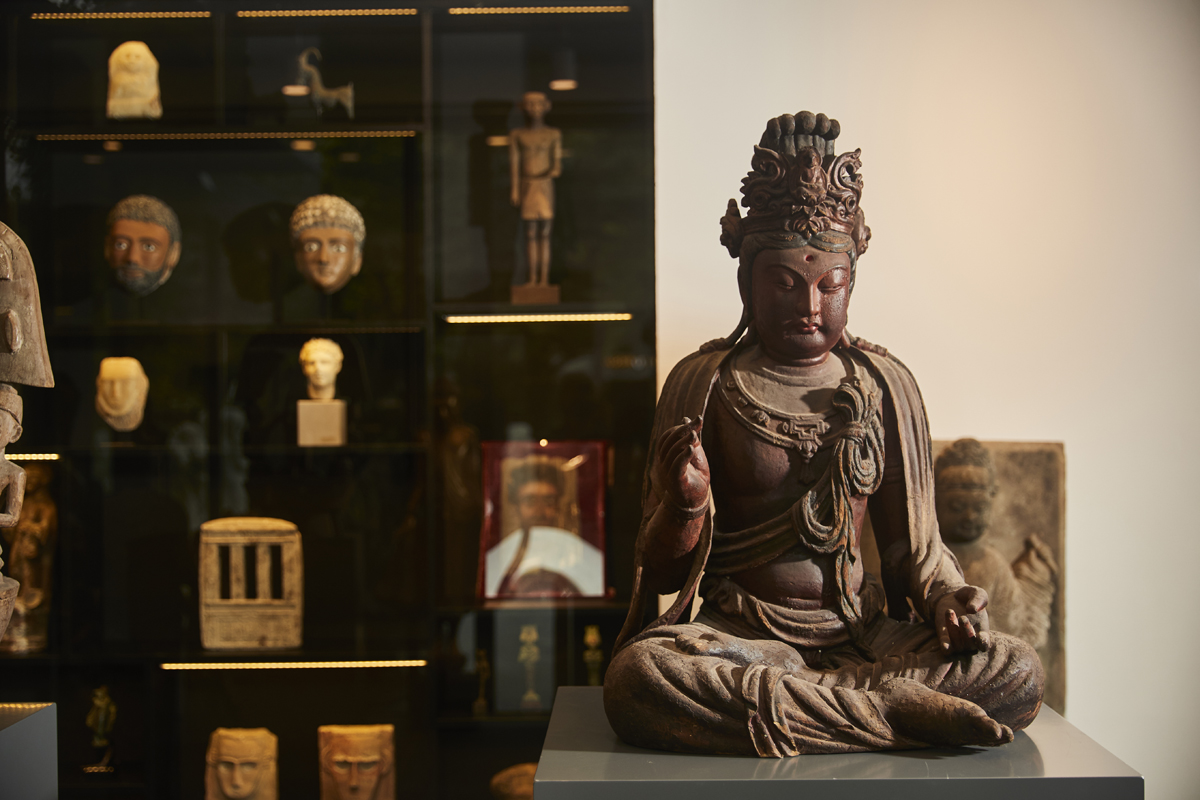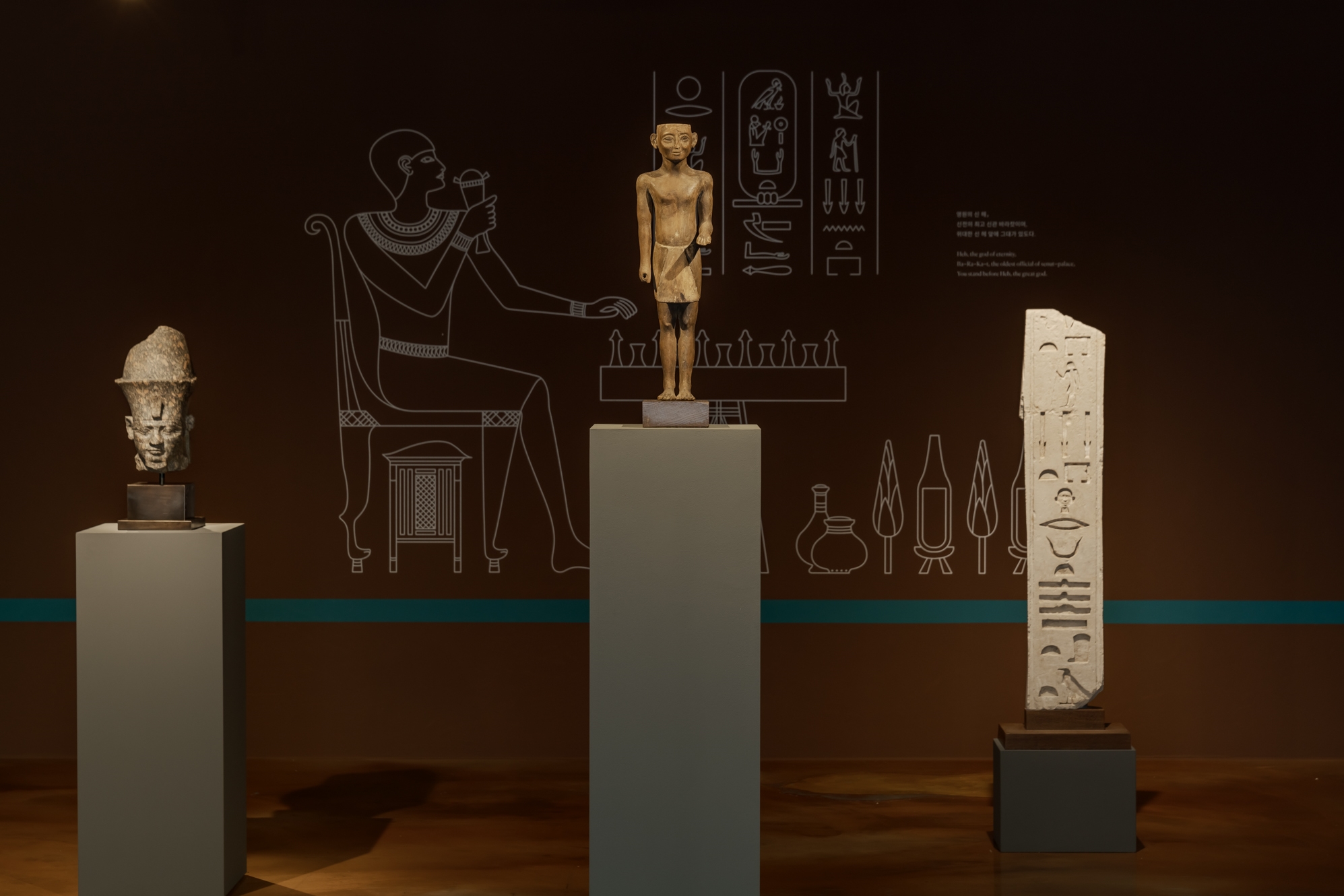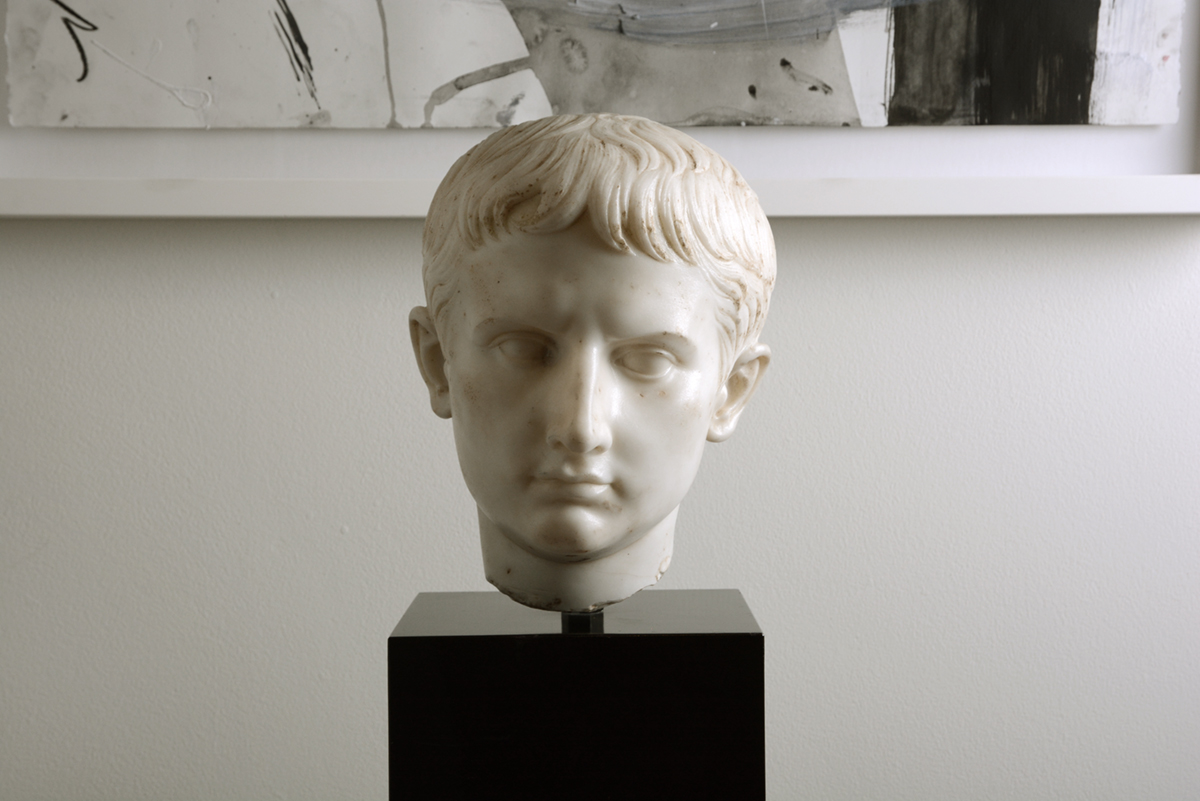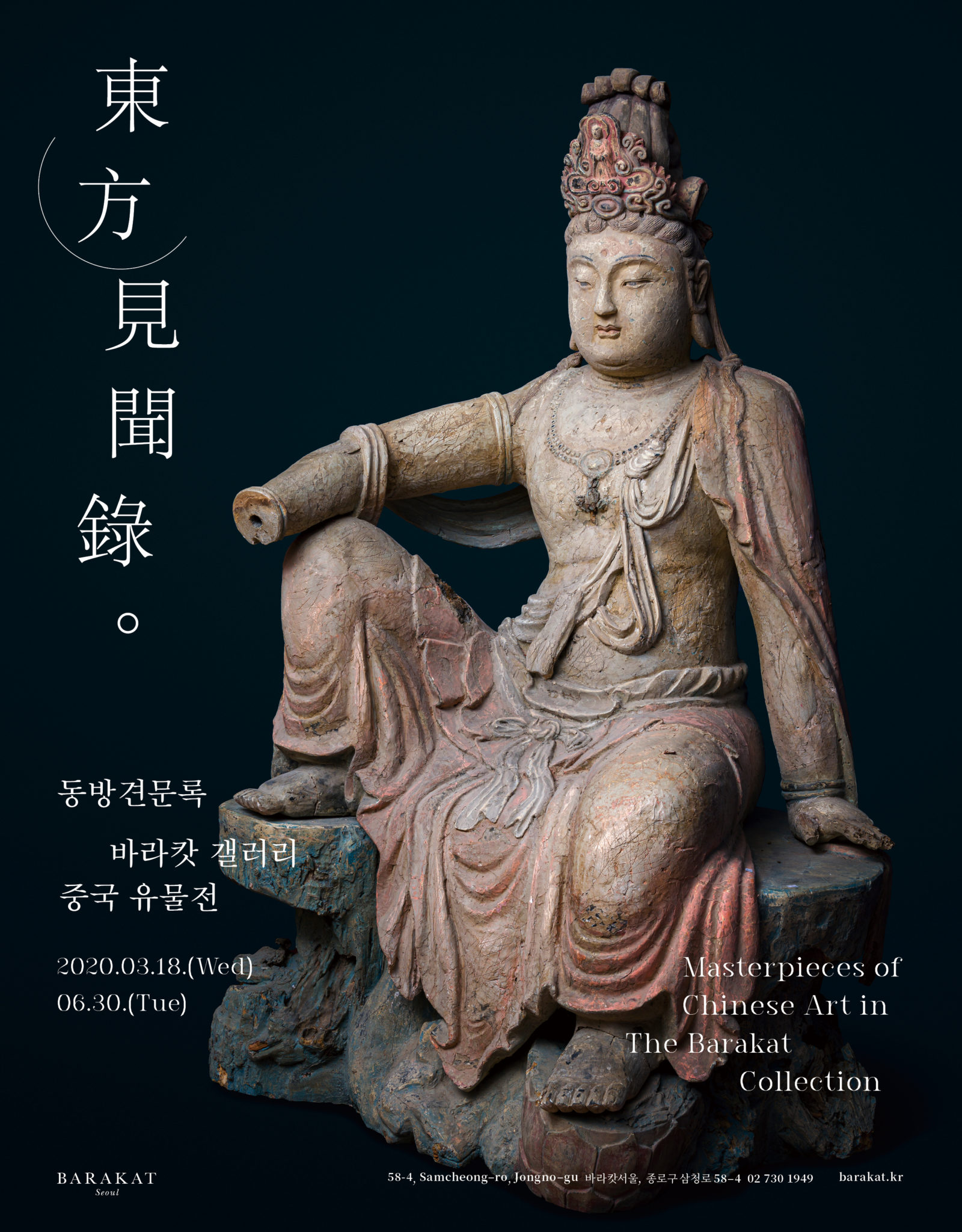Carrying into the room a large square canvas exploding with bold colors, Fayez Barakat declares, beaming, “This is this morning’s work.” It is 10:30 a.m. on Monday, a public holiday.
He started painting at 3:30 in the morning, he explains.
“I am very proud of what I accomplished today,” he says and turns around to ask his wife, Hwasun, if she likes it.
Painting in the early morning hours is a daily routine for Barakat, an internationally recognized dealer and collector of ancient art. Employing numerous techniques, most of them of his own devising, Barakat fills large canvases with his visions of the underwater world — bright, colorful corals swaying in the dark bottomless ocean. Mind you, he does not dive. Not since nearly drowning in a river as a child has he gone near the water. He watches documentaries about the underwater world on the Discovery Channel, however.
On my previous visit to the Barakat Seoul in Samcheong-dong, the artist-collector had explained how he saw visions while meditating and painted in a trance-like state, his brushes and tools seemingly moving on their own, and himself just allowing it to happen. Rather like a medium.
Barakat runs a fifth-generation family business in art of the antiquities, running galleries in Beverly Hills and London as well as a museum in Amman, Jordan. The first Barakat Gallery in Asia is officially opening in Samcheong-dong, Seoul, on Monday.
Gifted with a photographic memory, Barakat is a veritable walking encyclopedia of ancient art. He has not had formal education or training since graduating high school at the age of 13, but he has largely taught himself by reading widely and working alongside well-known archaeologists and historians.
The family business, founded some 150 years ago in Jerusalem, did not interest the young Barakat who had his heart set on studying medicine. But the 1967 Arab-Israeli war changed everything. Artifacts from tombs plundered in the war became available and he became involved in the business. “I had to shift all my interest into the family business. Luckily I have been very successful,” he says.
At age 33, Barakat moved to the US and opened the Barakat Gallery in Beverly Hills in 1983. “I did not want to continue living in Israel. My late son’s favorite toy was a gun!” he recalls.
Barakat describes himself as a pacifist.
“Buddhism has interested me since I was a boy,” he says, adding emphatically, “I am against wars, any kind of terrorism.”
Today, Barakat boasts a collection of more than 40,000 museum-quality artifacts, covering the Biblical, Classical, ancient Chinese and Pre-Columbian periods as well as African art which he began collecting upon Pablo Picasso’s advice.
How has he been able to accumulate a high-quality collection of such vast scale?
“Between the 1960s and the 1980s, Middle Eastern governments allowed trade in antiquities. Dealers dealt on the condition that they reported their stock to the Department of Antiquities which had the first rights. The dealers were allowed to export a piece if the authorities did not want it,” he explains. “We had a window when we acquired huge collections.”
Things are very different these days with stricter restrictions on trading in antiquities.
“What we acquire now are things that have been exported legally. We now buy at auction houses or museums that have changed their interests. There are also private collectors in the Middle Eastern and Mediterranean art,” he explains.
Barakat relates an episode that was a turning point in his life as a collector.
“There was a phase in my life when I collected beautiful things. I was living in Jerusalem and I kept them in my room. These items were strictly for my personal appreciation,” he says.
One day, a neighborhood construction accidentally destroyed the room, destroying everything that the room held.
“I regretted that I had wanted to keep things to myself,” he recalls, and ever since that day, he has never been attached to his collections. “I made the decision that I am happy to be a transitional guardian of things that may end up in museums,” he says, although he admits to being especially proud of his collection of ancient glass works, estimated to be worth $30 million to $50 million.
With his business taking him around the world, he is not one to stay put in any city for too long. Yet, he has been living in Seoul for the past six months, getting ready for the opening of the Barakat Seoul on Monday.
As for business prospects in Seoul, where his gallery would be the first of its kind, the veteran dealer says, “As a rule, there is no market for antiquities. But people are highly educated and there is sophistication in the city (Seoul). Antiquities may be a newcomer but based on responses so far, the reception has been great.
“A sense of appreciation is sufficient to open a gallery,” he notes.
At this point in his life, Barakat is not so much interested in running a profitable business as he is in “sharing it as a mini museum.”
The Samcheong-dong gallery brimming with casually displayed ancient artifacts — to walk into the gallery is like stepping inside a museum except that there are no barriers between the viewer and the artifacts and you can actually touch them — looks crammed. As such, Barakat is looking for a larger building in Seoul to house a small, non-profit museum. His vast collection includes artifacts from major ancient civilizations, of which there are hardly any in local museums, Barakat observes. “I think it would be a big present for the city,” he says.
“I have more than 40,000 artifacts that make up 500 complete collections, meaning an almost complete collection for each period,” he explains. Pointing out that he also has 1,000 pieces in his collection that cover the major periods in China, he adds, “I would love to acquire Korean items.”
Picking up the Burmese Buddha head sitting on the round marble table in the private salon, Barakat guides me through his process of determining the authenticity of an artifact.
“You have to have knowledge of the style. Looking at it, I ask myself, ‘Is it 200 years old or manufactured in the last 10 years?’ I take into consideration the material and the tools used and the general surface of the material,” he explains, taking the Burmese Buddha head between his hands.
“I look for any tool marks with a magnifying glass to check and identify the type of tool, whether it was flint, stainless steel,” he says. Handing me a small magnifying glass that makes images appear 10 times larger, he invites me to take a look.
“Under the magnifying glass, look for sand particles, pollutants that are left on the surface that accumulate in the form of crystals,” he says.
Fifty percent of the time, Barakat claims, he can determine the authenticity of an artifact by merely touching it, feeling it. “There is an aura to everything and I can feel the energy of ancient pieces.”
Barakat is opening his latest gallery with an exhibition of 25 of his own paintings and pieces from his antiquities collection, aptly titled “Fayez Barakat: Matter Energy That Matters.” The exhibition runs from Oct. 11 until Feb. 28, 2017.
The show’s juxtaposition of the ancient and the contemporary reveals Barakat’s philosophy — “Without recognizing our past, we can never appreciate our future in the present,” he says.
By Kim Hoo-ran (khooran@heraldcorp.com)





